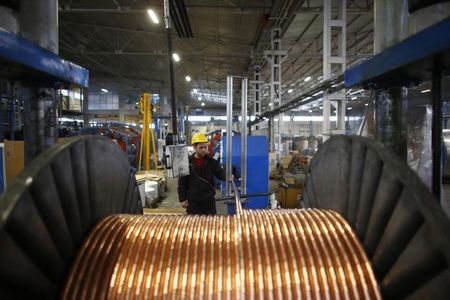
Investing.com — Copper Copper Futures prices recently took a tumble, falling below $9,000/mt for the first time since April. This was driven by a combination of factors, including rising inventories, disappointing manufacturing data, and the outcome of China’s Third Plenum.
Despite the recent weakness, analysts at UBS Global Research remain bullish on copper’s medium-term prospects. “We reiterate USD 9,000/mt is an attractive medium-term entry point to consider,” the analysts said.
Supply Constraints Expected to Support Prices
Several factors underpin UBS’s positive outlook for copper. First, while visible inventories have increased somewhat, they remain low by historical standards. This suggests that a potential supply-demand imbalance could emerge in the future.
Second, major copper miners have reported weaker-than-expected production results for the second quarter, indicating ongoing supply constraints. This is further evidenced by the fact that Codelco production is down 7% year-to-date.
Speculative Frenzy Abates
The recent price correction in copper was accompanied by a decrease in speculative positioning. This suggests that the market is becoming less frothy and that the price decline is more likely a reflection of cyclical and policy-related headwinds rather than a fundamental shift in the copper market.
Short-Term Headwinds
UBS flags that near-term demand for copper has been softer than anticipated. This has led to a build-up of inventories. However, analysts expect this to be a temporary phenomenon.
Specifically, UBS attributes the lackluster demand to weak interest in refined products from Chinese end-users. This weakness has been amplified by mid-stream destocking and delays in purchases by state grid operators.
UBS recommends considering buying copper at the current price level of $9,000/mt as a medium-term investment strategy. Additionally, analysts suggest selling downside price risks to generate additional yield over the next six months.
This post is originally published on INVESTING.


